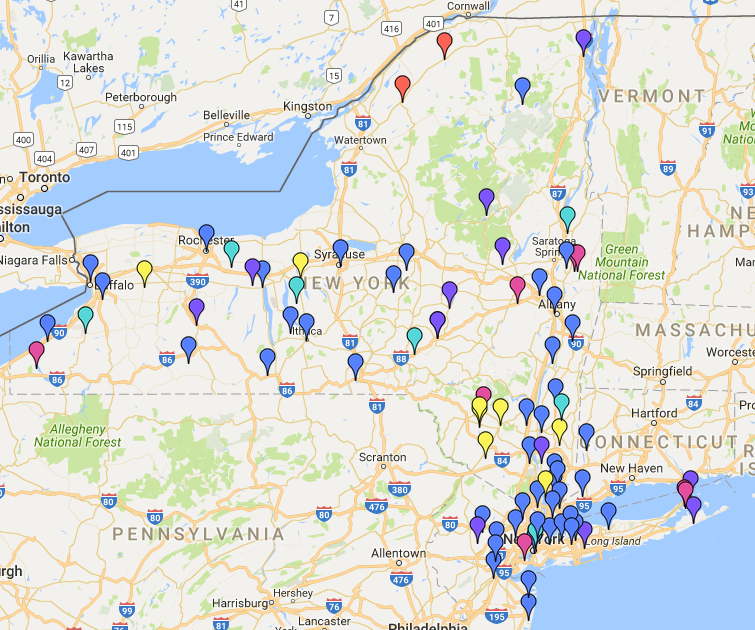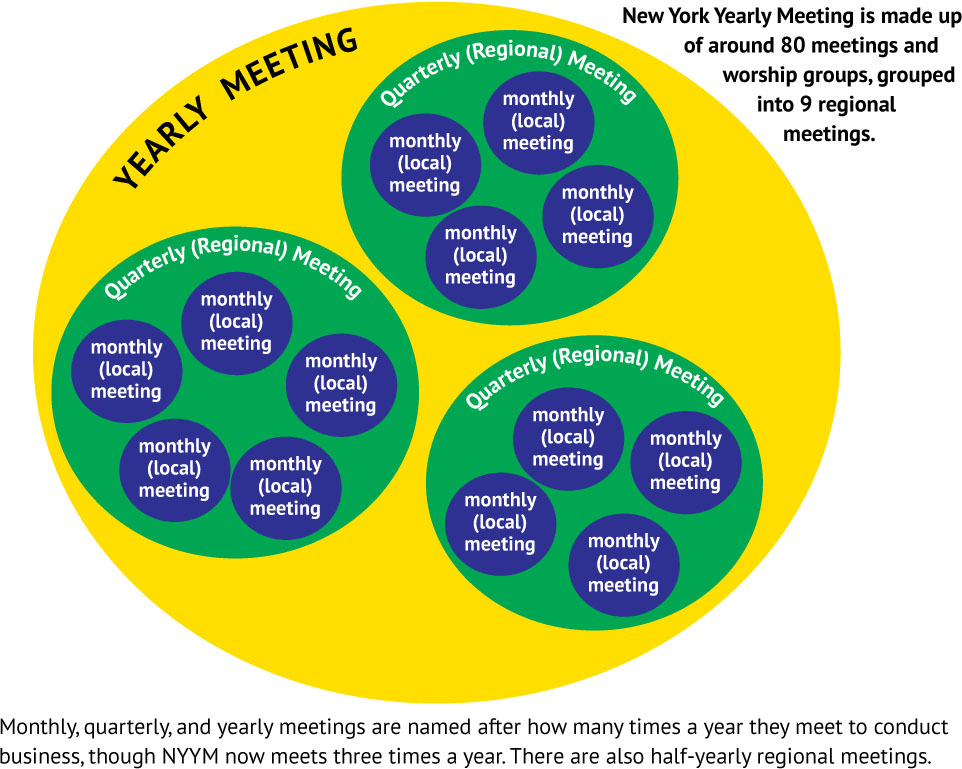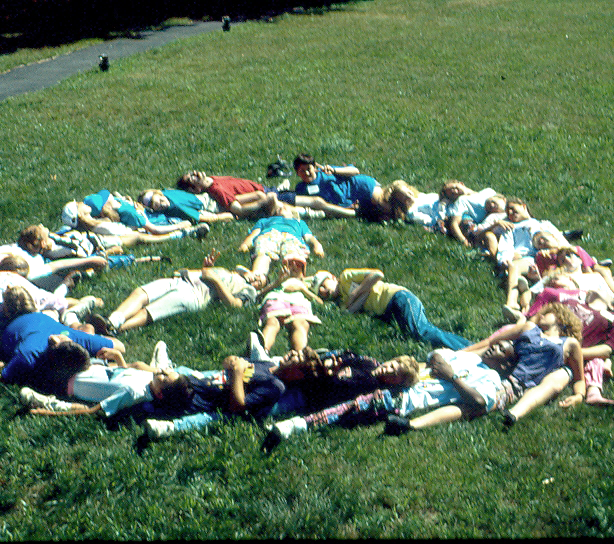What to expect in the silent, waiting form of Quaker worship.
in Quaker Meeting for Worship
Overview. The traditional Quaker meeting for worship is unlike any other form of worship. There will be no officiating minister, no prepared readings or prayers or sermon, no hymns, no sacramental rituals or religious objects, only deepening silence and occasional spoken ministry from the body of worshippers.
Beginning. The traditional Quaker meeting for worship begins when the first Friend enters the meeting room and begins to "center down," to seek the depths within him or her. We have no formal beginning to the worship.
Silence. Friends sit in silence, a waiting, expectant silence that grows deeper as time progresses and as the worshippers reach those depths within them and as their attention settles on God and each other in love.
Ministry. At some point in the hour (by convention no sooner than twenty minutes or so after the beginning of worship), someone may stand up and speak. Ideally, this "vocal ministry" has been prompted by the Holy Spirit as a gift of ministry to the meeting. We accept each person's vocal ministry in a spirit of peace, even if it does not speak to us personally, in the faith that it may speak meaningfully to someone else.
The meeting progresses. Occasionally, the whole hour passes without anyone speaking, but usually several people do, leaving some time between their messages.
The gathered meeting. Sometimes the silence becomes especially deep as the meeting progresses and comes alive with Presence. This often happens when increasingly rich vocal ministry draws the meeting in toward its Center, until some—maybe all—of the worshippers become aware of each other and of God's presence, in a deep communion of the Spirit. We call this a "gathered" or "covered" meeting.
Closing. At the appointed time, usually an hour, some designated person closes the worship by saying, "Good morning, Friends." Friends then turn to each other and shake hands and say their own "good mornings" to those around them.
Directly after the meeting. Before Friends leave the meeting room, many meetings hold a period directly after "rise of meeting" for "afterthoughts," and for introductions, and announcements. "Afterthoughts" are short messages that these Friends did not feel "rose to the level of spoken ministry," meaning that the Spirit's promptings did not become urgent enough or clear enough for them to share the message with the meeting during worship, but the thought is still on their mind.
Programmed worship
Quakerism expanded from the East Coast into the Midwest in the middle of the nineteenth century. As Friends sought to meet the needs of an energetic and diverse population of settlers, some meetings began to experiment with more familiar forms of worship that used hymn singing, sermons, Bible readings, collective prayer, and other outward liturgical forms that were new to the Quaker movement. Among some Friends, these practices took hold, and now many Quaker meetings have pastors and conduct their meetings much like other Protestant denominations. These services, called programmed worship, are usually quite simple and almost always include some period of waiting worship. By contrast, the traditional meeting in silent waiting on the Spirit is sometimes called "unprogrammed worship."
Semi-programmed worship
Some meetings hold a hybrid form of worship that features some aspects of a conventional Protestant worship service in addition to an extended period of silent worship. One common way to do this is to have hymn singing either before or after the waiting worship.





